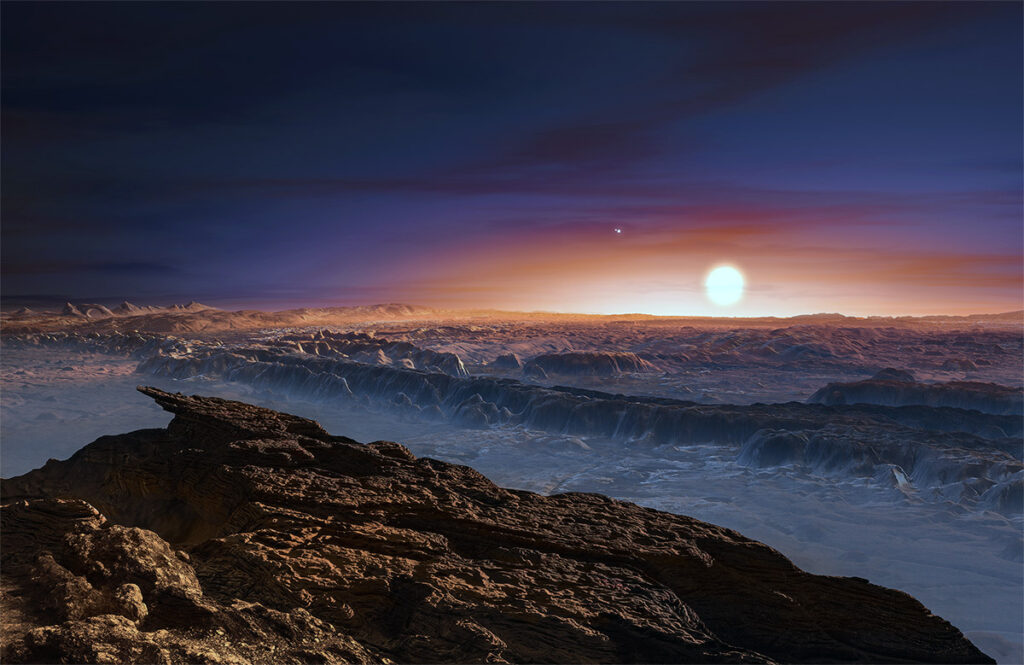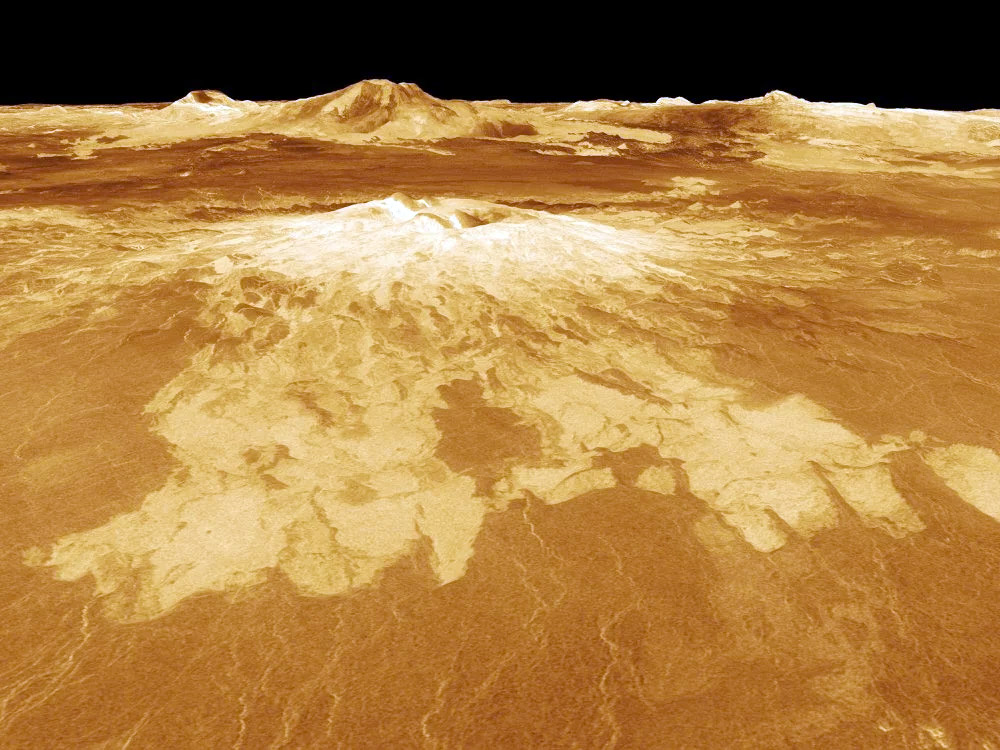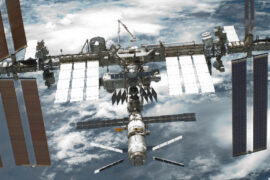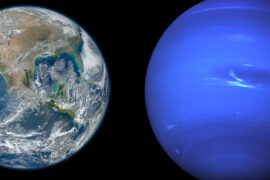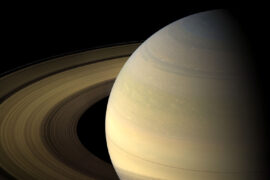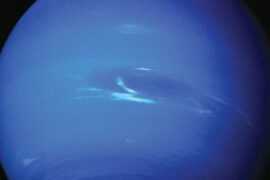The universe is not a friendly place for us humans. We know that if we leave the safety of Earth, there will be all kinds of harsh conditions out there trying to kill us. From invisible enemies like radiation to fast and furious threats like asteroids.
But what’s the planet that has the worst, deadliest, and most dangerous conditions that we know of?
Venus is the most dangerous planet for humans. It’s so hot that a spacecraft wouldn’t be able to get to the surface because they’d melt on the way down. If we could somehow get around that, the enormous pressure would crush it as it is more than 3 times higher than what a nuclear submarine can withstand.
But Venus is not the only inhabitable planet we know about. The truth is any other planet other than our own is an inhospitable environment. We just can’t live anywhere else without the help of spacesuits and other advanced technology.
Some planets, however, are a more difficult challenge than others. Assessing their conditions will help us choose our targets in case we want to try and colonize them at some point.
This is why Mars is in our sights as our next target to send humans to. Not just because it is relatively close to us, but because the conditions are not as bad as in the other planets of the Solar System, which is why you will not find it in this list.
If we are going to look into dangerous planets, we should also include exoplanets. Those are the planets outside the Solar System. We still don’t know much about many of these planets due to their distance, but we know enough to estimate the challenges that we would find if we tried to visit.
We are also going to assume that you would be using a spacesuit that could provide you the necessary oxygen to keep you alive because humans are not good at breathing anything else and all of these planets are full of toxic gases.
So let’s rank the most dangerous planets from least to worst.
5. Neptune
While doing the research for this article I’m amazed at how many creative ways the universe would have to get rid of us. If high temperatures or radiation doesn’t sound fun enough for you, how about going to Neptune and being ripped apart by the wind. Yes, just winds. Doesn’t sound that dangerous right?
Well, how about winds that are going at somewhere between 700 miles per hour to 1,200 miles per hour (1,900 km/h). That’s faster than the speed of sound. For comparison, the highest wind speed in a tornado ever recorded on Earth is 302 mph.
That’s not the only fun Neptune has to offer. We don’t know enough about what’s underneath its atmosphere to know if it has a solid surface, or if you would free fall until you reached its core, but if it does has a surface, it has a temperature of 5,000°, enough to melt rock.
4. OGLE-TR-56b
OGLE-TR-56b sounds like a weird name for a planet, but it was named like that because it was discovered by the Optical Gravitational Lensing Experiment, or OGLE, for short. It is located in the direction of the Saggitarius constellation and is about 4,800 light-years away from Earth.
Imagine a planet very similar to Jupiter, and just as distant from its star but due to gravity, it gets pulled as close to its star as Mercury is from the Sun. That is OGLE-TR-56b, the first planet in a category of exoplanets that we call “hot Jupiters”.
On this planet, you get all the fun of toxic gases, and extreme winds of a gas planet combined with the high temperatures of Mercury or Venus. What you get is a planet where it literally rains liquid, melting iron. Don’t forget to bring an umbrella.
3. Jupiter
Jupiter is the largest planet in the Solar system, and even though from our perspective it seems to have a defined shape with brownish tones that might look like a rocky surface, in reality, it’s just a big ball of gas.
So, that means that if you were to fall on Jupiter, you could simply go through and come out on the other side, right? Well, not exactly.
The pressure and high gravity of Jupiter are so high that even though you’d be falling at high speeds, you would feel as if you were hitting yourself against a wall over and over again. After only 75 miles, the winds, the pressure, and the gravity would combine to destroy your spacecraft. How do we know that? well, we have actually tried. That was the distance the Galileo probe survived in 1995 when it was sent to explore Jupiter. At that point, communication was lost, and the probe was destroyed.
Even if you made it past the point the Galileo made it, it only gets worse from there. The temperature keeps increasing and you’d reach a point when you’d just feel the heat and the pressure because Jupiter’s atmosphere becomes so dense you wouldn’t see or hear anything. Even radio waves and all other signals are cut off. That means no internet in the depths of Jupiter, and really, what’s worse than that?
At some point, you’d reach temperatures higher than the surface of the Sun and if you were somehow still alive, gravity’s pull would be so powerful that there would be no way to turn back, you’d be stuck there forever.
2. Proxima b
We have already talked about Proxima b in a previous article about the planets of Alpha Centauri. It’s located in the closest star system to us and has a neighbor that might be in the habitable zone of its system. Proxima b, however, is far from habitable.
Unlike some of the other planets on this list, Proxima b does have a rocky surface, however, it is tidally locked to its star. This means that just like the Moon, only one side of it faces its star all the time. This makes half of Proxima b extremely hot, and the other side extremely cold.
It is believed Proxima b could have held an atmosphere and even water at some point in its history. So why is it so dangerous? well, because of its home star.
Proxima Centauri, its star, is a type of star called a red dwarf. Red dwarfs like to throw solar winds and solar flares violently and at high speeds. This not only would have destroyed Proxima b’s atmosphere, but it means that every once in a while, the whole planet is bathed in extreme heat and radiation, making it deadly for any living thing that could be on the planet. These flares could show up without warning, and they are so big the star shines 1,000 times brighter than it normally does.
1. Venus
Venus is our other neighbor besides Mars. Because of this, one wouldn’t expect it to be so different from Earth, but the fact that it has such harsh conditions tells us a lot about the habitable zones in star systems. A little bit of distance (little on an astronomical scale) can make a huge difference in the conditions of a planet.
Venus isn’t only extremely hot because of its closeness to the Sun. it is also full of active volcanoes. Because it has a thick atmosphere, the heat and carbon dioxide get trapped within the planet, creating a cycle that raises the temperatures.
Venus is an extreme example of the same process scientists on Earth talk about when they refer to the greenhouse effect and why we need to be so careful about global warming.
It is likely Venus could have been habitable at some point in its history and this climate change turned it into the hellish ball of heat it is today.
So we chose Venus as the most dangerous planet not only because of its inhospitable conditions but because it is also a warning telling us to take better care of our own planet.
Summary
- Space is not kind to humans. Planets other than Earth are for the most part, extremely deadly to us.
- It is unlikely for a planet to have the necessary conditions for humans to be able to live in it without help from advanced technology.
- Planets are very dangerous to humans because of extreme temperatures, high atmospheric pressure, fast winds, radiation, and other fun stuff.




